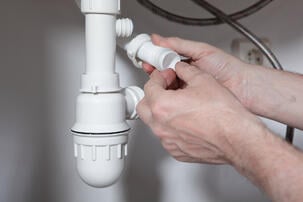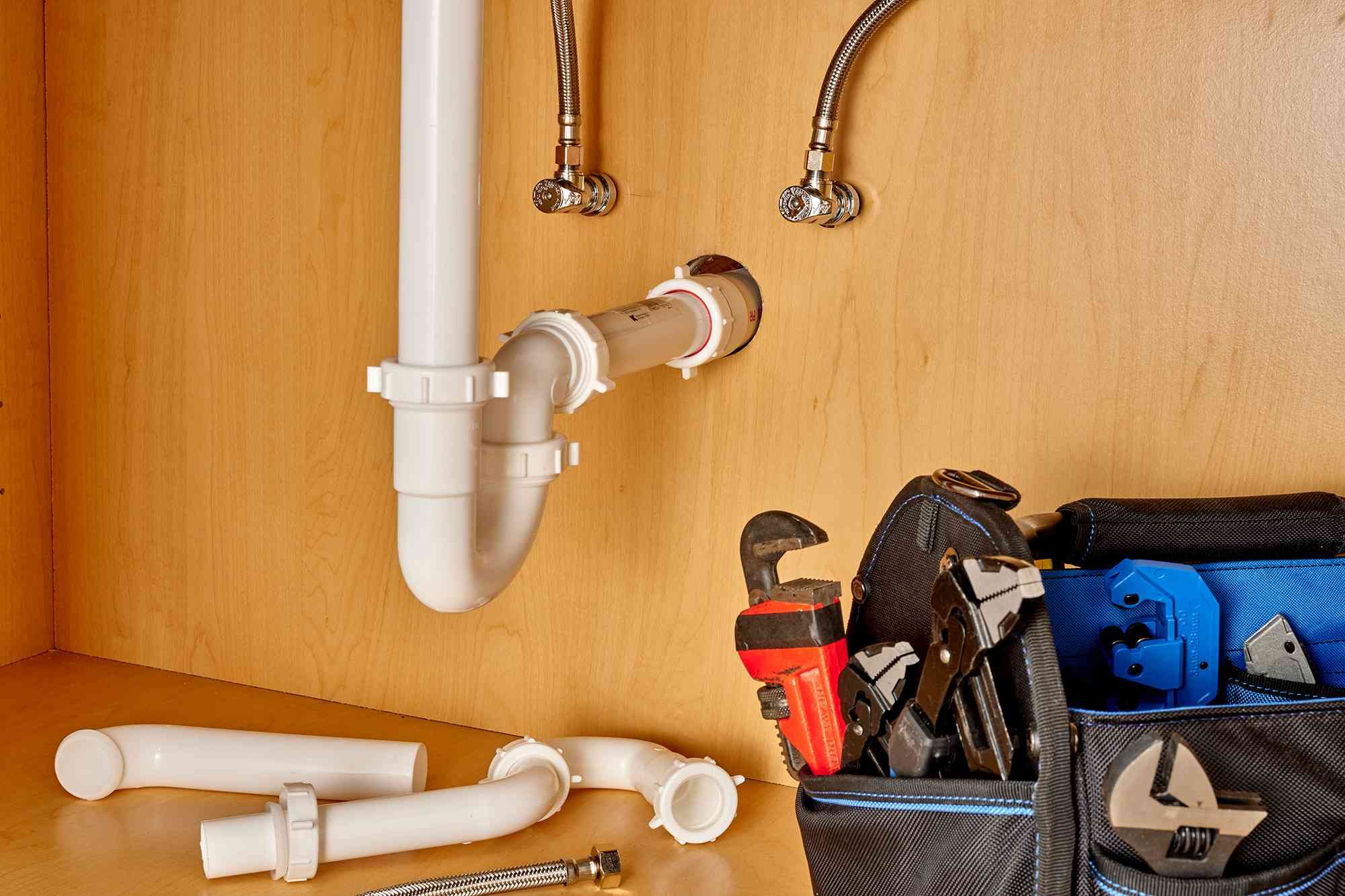Delving into the ABCs of Home Plumbing: A Beginner's Manual
Delving into the ABCs of Home Plumbing: A Beginner's Manual
Blog Article
On this page on the next paragraphs you will discover additional high-quality tips all about Understanding the Basics of Your Home's Plumbing System.

Plumbing is a crucial facet of any kind of home, in charge of supplying clean water for alcohol consumption, food preparation, and showering, in addition to eliminating wastewater safely. Recognizing the essentials of home plumbing is essential for every homeowner to make sure proper upkeep, troubleshooting, and, if essential, fixings. In this novice's guide, we'll cover the essential principles of home plumbing to help you end up being more aware of exactly how it functions.
Water Supply System
The water supply system brings clean water right into your home from a municipal water resource or a private well. It includes a main water line that attaches to your home's plumbing system, usually situated underground. A water meter determines the amount of water taken in, while a shut-off valve enables you to regulate the flow of water right into your home.
Plumbing Fixtures
Plumbing fixtures are tools that provide water to numerous parts of your home and consist of sinks, taps, bathrooms, showers, bathtubs, and home appliances such as dish washers and cleaning devices. Each fixture is connected to the water system system via pipelines and installations and might have its shut-off shutoff for upkeep or emergency situations.
Water Heating Unit
The water heating system is accountable for heating water for residential usage, including showering, cooking, and cleaning. Typical types of water heaters include tank-type hot water heater, tankless (on-demand) water heaters, and heatpump water heaters. The water heater is attached to the water system system and provides warm water to plumbing fixtures as needed.
Drain System
The drainage system gets rid of wastewater from your home and carries it away to a sewer treatment facility or septic tank. It consists of a network of pipes, installations, and components that transfer wastewater from plumbing fixtures to the major drain line or septic tank. Proper drain is vital to avoid clogs, back-ups, and sewer leakages.
Ventilation System
The air flow system aids maintain appropriate atmospheric pressure and prevent drain gases from entering your home. Air vent pipelines, additionally called air vent heaps, extend from plumbing fixtures to the roofing, enabling drain gases to get away safely outside. Air flow pipelines additionally allow air to get in the water drainage system, facilitating smooth wastewater flow and avoiding suction or vacuum effects.
Typical Plumbing Tools
Having the right tools available is essential for performing basic plumbing repair work and maintenance tasks. Usual plumbing devices consist of adjustable wrenches, pipe wrenches, pliers, pipeline cutters, hacksaws, bettors, augers (or drainpipe snakes), and Teflon tape. Having these tools readily offered can help you tackle small plumbing issues efficiently.
Basic Plumbing Repair Services
While some plumbing repair work may call for specialist aid, many common problems can be addressed with fundamental do it yourself strategies. Understanding exactly how to repair a leaky tap, unblock a drain, replace a toilet flapper, or fix a leaking showerhead can save you money and time on plumbing repairs.
Verdict
Comprehending the basics of home plumbing is essential for every single house owner to preserve a secure, functional, and reliable plumbing system. By acquainting yourself with the supply of water system, plumbing fixtures, water drainage system, air flow system, typical plumbing devices, and fundamental repair work, you can with confidence address small plumbing problems and ensure your home's plumbing system operates efficiently.
Plumbing for Beginners: A Comprehensive Guide
If you’re a beginner when it comes to plumbing, don’t worry; you’re not alone. Plumbing may seem intimidating, but with the right knowledge and a little practice, you can handle many common plumbing issues on your own. In this comprehensive guide, we will demystify the world of plumbing for beginners, providing you with the basic knowledge and skills needed to tackle common plumbing problems and even take on some DIY plumbing projects.
The Importance of Basic Plumbing Knowledge for Beginners:
First and foremost, basic plumbing knowledge gives you a solid foundation. It helps you grasp the key concepts and terminology that are essential in this field. By learning the basics, you’ll be able to build upon that knowledge and tackle more complex plumbing tasks in the future.
Having a basic understanding of plumbing also enables you to handle common issues that may arise in your home. Picture this: a leaky faucet or a clogged drain. With some basic plumbing knowledge, you’ll have the confidence to troubleshoot and fix these problems on your own. It saves you from unnecessary expenses and the hassle of waiting for a professional to arrive.
As a beginner, learning the basics of plumbing empowers you to take care of your own home. It gives you a sense of independence and self-reliance. You’ll no longer have to rely solely on professionals for every small issue that pops up. Instead, you can handle many tasks yourself, saving time and money in the process.
Remember, everyone starts as a beginner. Embrace the learning process and take small steps to expand your plumbing knowledge. There are plenty of online resources, tutorials, and even local workshops that talk about plumbing for beginners.
Essential Tools for Plumbing for Beginners
As you start your plumbing journey, having the right tools in your toolbox is crucial. Let’s explore some of the must-have tools:
Adjustable Wrench:
This versatile tool is a staple in any plumber’s toolbox. It allows you to tighten or loosen nuts and bolts of various sizes. Make sure to have an adjustable wrench with a comfortable grip.
Pipe Wrench:
A pipe wrench is specifically designed for gripping and turning pipes. It has serrated jaws that provide a strong grip, making it easier to loosen or tighten threaded pipes and fittings.
Plunger:
The plunger is a simple yet effective tool for clearing clogged drains and toilets. It creates suction when you push and pull, helping to dislodge blockages. Keep a good-quality plunger handy for those unexpected clogs.
Pipe Cutter:
When it comes to cutting pipes, a pipe cutter is your go-to tool. It creates clean, precise cuts without damaging the pipe. Look for a pipe cutter that can handle the pipe sizes you’re working with.
Hacksaw:
A hacksaw is useful for cutting through pipes, screws, and other materials. It’s a versatile tool that can handle different cutting tasks. Remember to use a blade suitable for cutting metal.
Tape Measure:
Accurate measurements are crucial in plumbing. A tape measure allows you to measure pipe lengths, distances, and dimensions accurately. Opt for a sturdy tape measure that extends a good length.
Pliers:
Pliers come in handy for various tasks, such as gripping, bending, and cutting. Slip-joint pliers with adjustable jaws are great for gripping pipes, nuts, and bolts.

As an enthusiastic person who reads about , I figured sharing that excerpt was essential. So long as you enjoyed reading our article plz consider to pass it around. Thanks for your time spent reading it.
Schedule Free Estimate Report this page